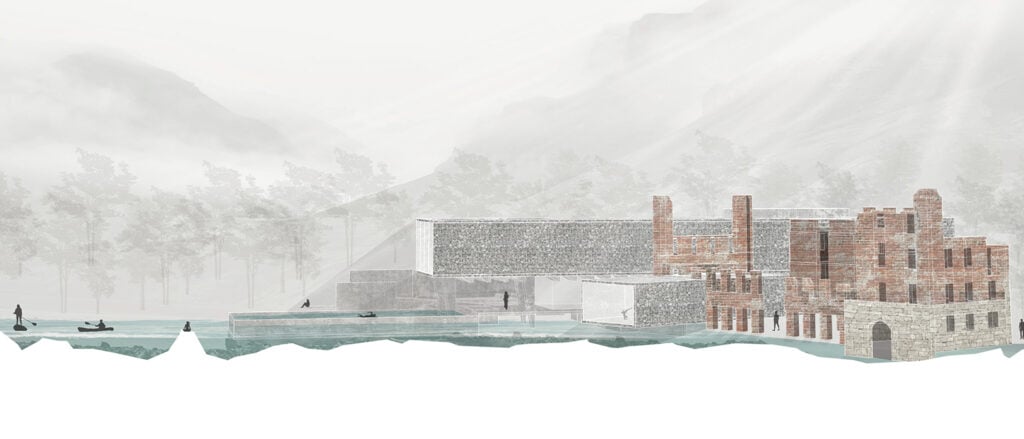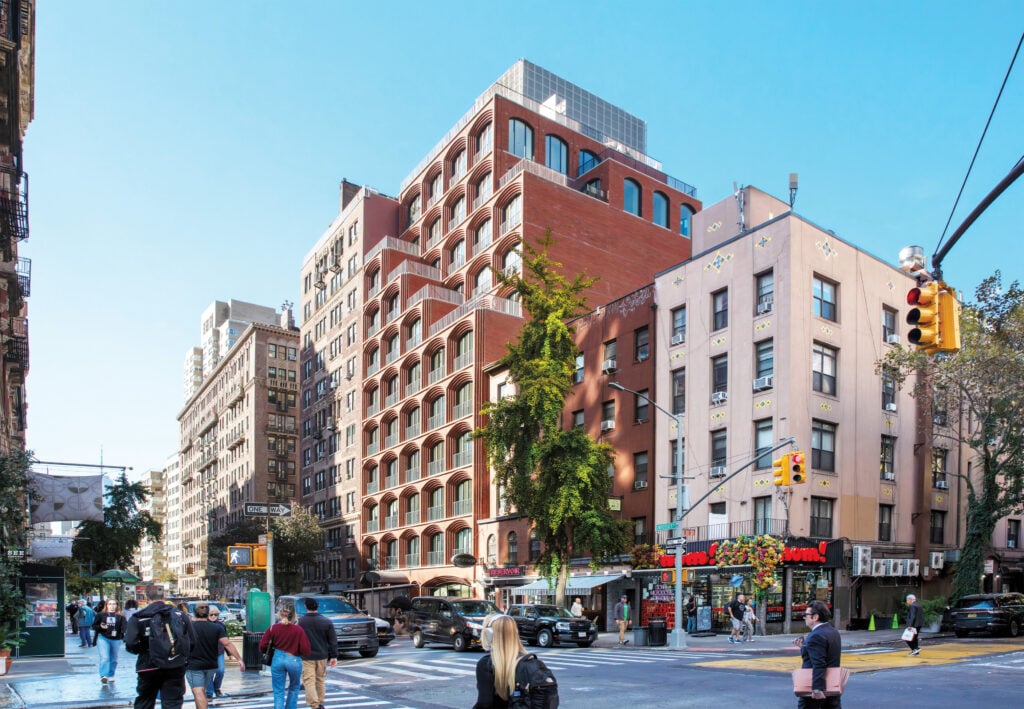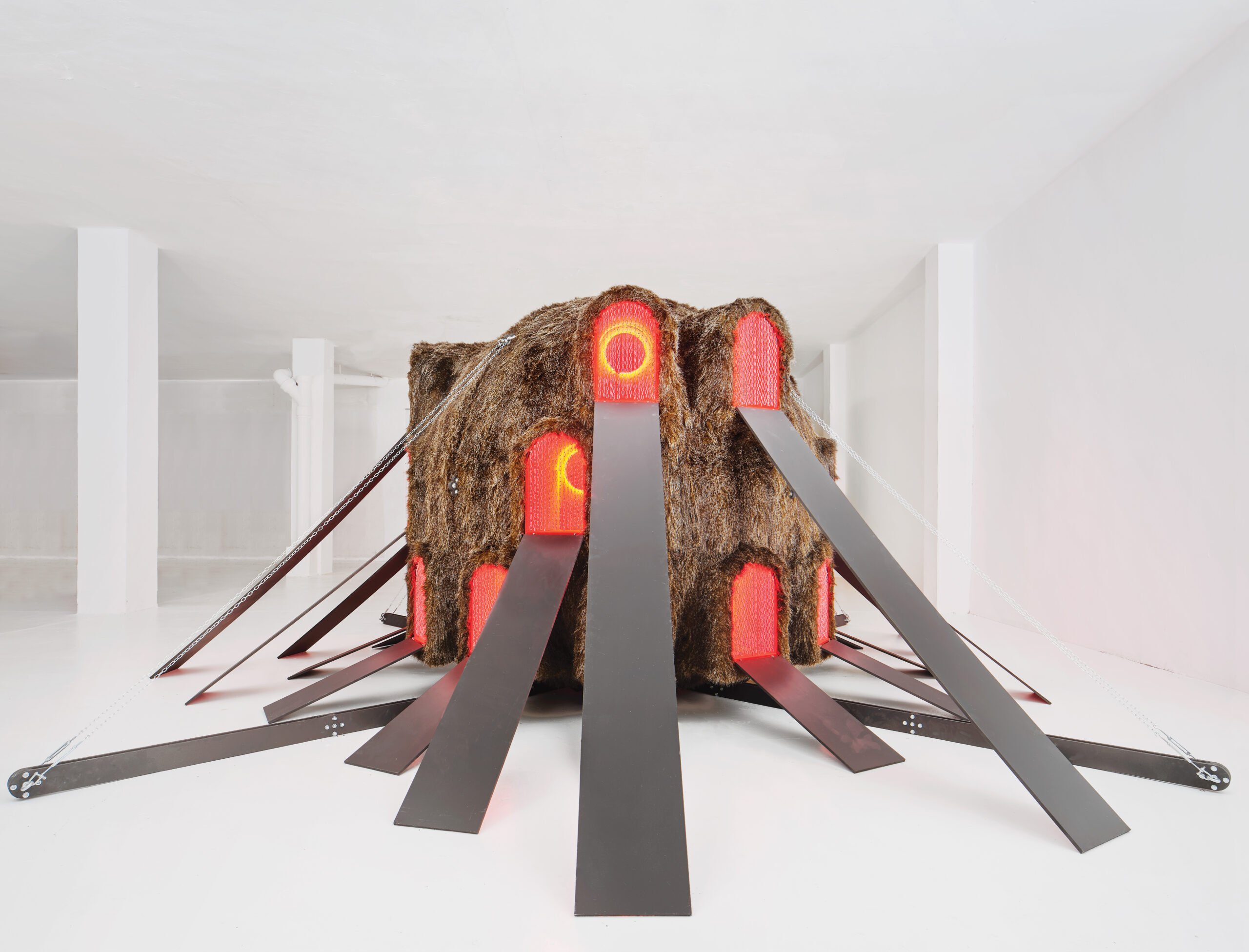
December 23, 2024
How TAKK Is Rethinking the Template for Architecture
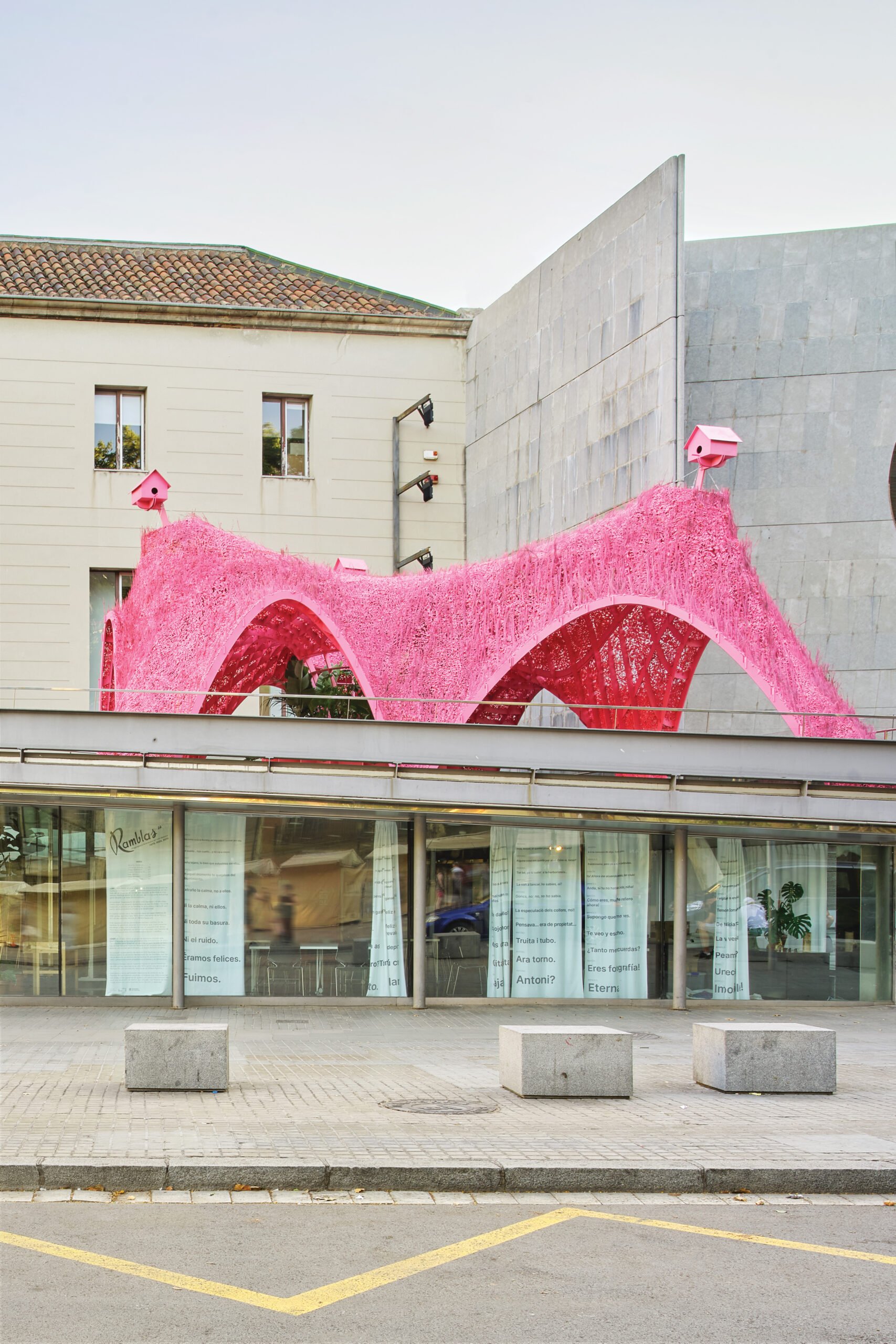
TAKK, which gets its name from a cherished album by the Icelandic band Sigur Rós, demonstrates how intractable issues like ecology, inclusivity, and feminism can be approached with imagination, ingenuity, and a sense of play. Eschewing the tropes of modern architecture, their public installations, some of which are parked at their studio-workshop in L’Hospitalet de Llobregat, contain a riot of ornament, color, and textures—bricolages of mussel shells, houseplants, poly foam, recycled wood, mesh, and chains.
Their exuberant aesthetic choices are strategic, explains Luzárraga: “We know that people will likely spend very little time with our installations and we need to capture their attention to engage them in the topic. We use bright colors and engaging aesthetics in the hopes of coaxing them to stay a little longer.”
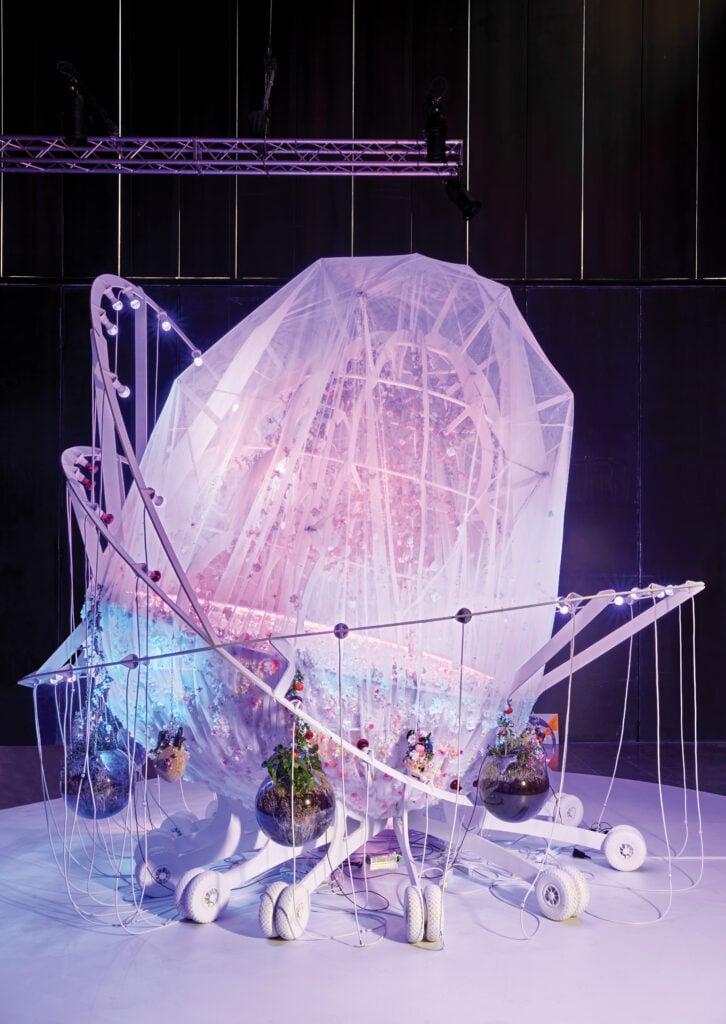
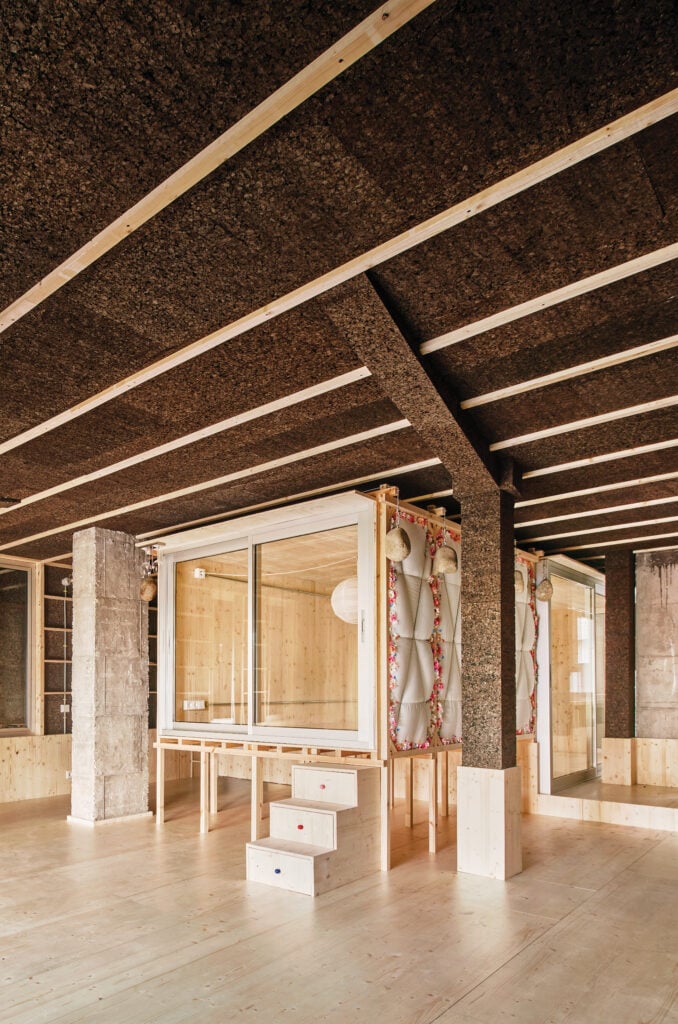
Compared with their speculative works, TAKK’s built projects contain subtler, yet no less radical, provocations. For instance, the aforementioned cat-friendly apartment renovation in Madrid, dubbed “The Day After House,” offers a radical rethink of sustainable living. Through a careful study of the location’s natural climate and the inhabitants’ routines, TAKK transformed a standard 1,184-square-foot space into a low-carbon dwelling with two living zones. The “winter” area is well insulated and more finished, while the “summer” section was essentially left as raw space and opened to the elements. TAKK has also deployed these tactics in a low-cost home renovation in Barcelona called “The 10K House” to demonstrate how building ecologically and beautifully is possible on any budget.
From the beginning, Luzárraga and Muiño’s architecture practice has been intertwined with their teaching careers. Luzárraga, who is currently on the faculty of the Columbia University Graduate School of Architecture, Planning and Preservation, says she’s optimistic that the current generation of architects is more aware of their agency. “When I was studying, architecture was a pure exercise of style, aesthetics, and composition—it had no social dimension. I think the current generation is getting wiser. They have an awareness about this [ecological crisis],” she explains.
“I hope they embrace the fact that the role of architecture is no longer about building in alliance with the real estate market. As architects, we have other responsibilities and other skills.”
Would you like to comment on this article? Send your thoughts to: [email protected]
Latest
Profiles
These Architecture Students Explore the Healing Power of Water
Design projects centered on water promote wellness, celebrate infrastructure, and reconnect communities with their environment.
Projects
KPF Reimagines the Arch in a Quietly Bold New York Facade
The repetition of deceptively simple window bays on a Greenwich Village building conceals the deep attention to innovation, craft, and context.



